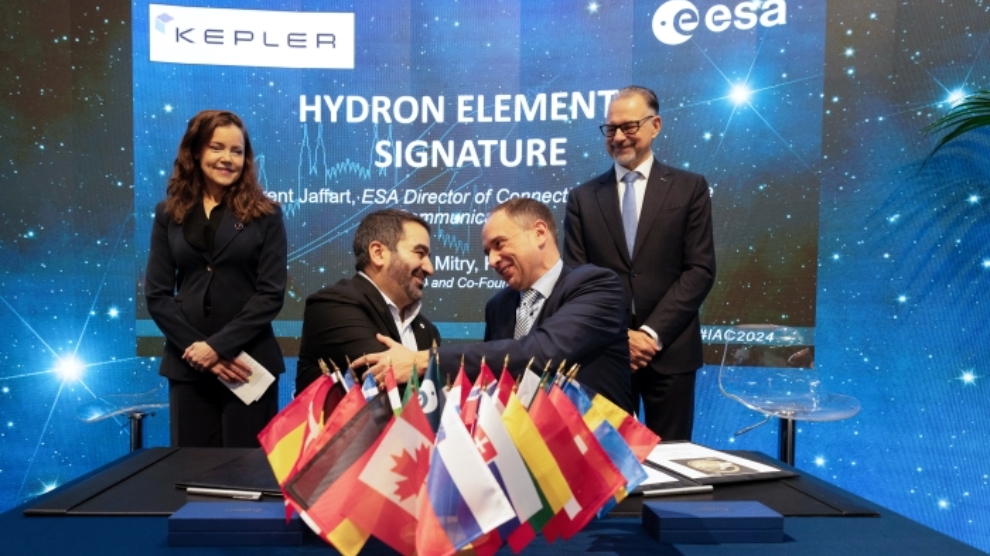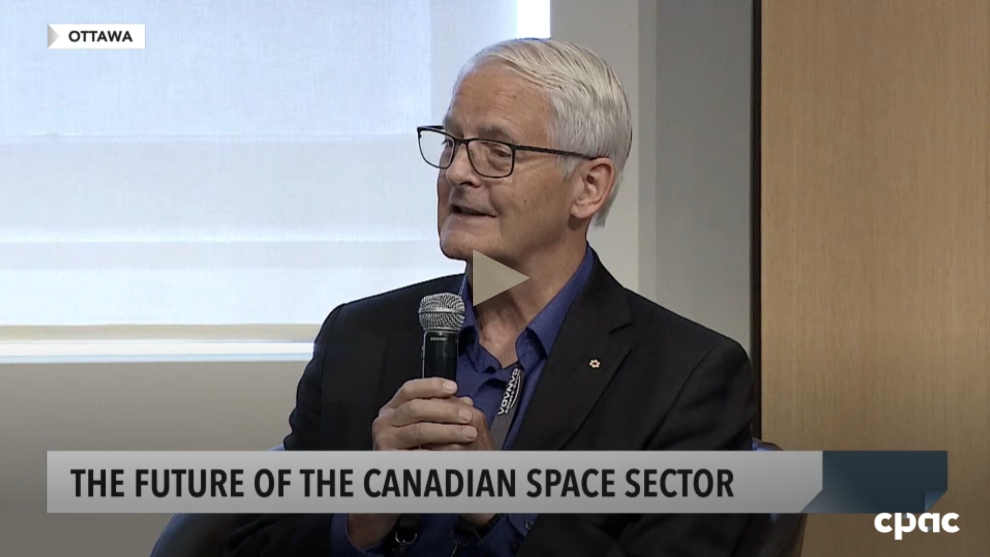The European Space Agency (ESA) has selected Canada’s Kepler Communications as prime contractor on the ESA’s High Throughput Optical Network (HydRON) development program.
According to the ESA’s website, “HydRON aims to demonstrate the world’s first (all) optical multi-orbit transport network at terabit/sec capacity in space, extending terrestrial fibre-based networks seamlessly into space – in other words, HydRON will demonstrate the ‘Fibre in the Sky’ and the ‘Internet beyond Cloud(s)’.”
As prime contractor, Kepler Communications will lead the development of HydRON’s low Earth orbit segment (Element #1). The initial phase of the contract led by Kepler is worth 36 million Euros (about C$54 million/US$39 million), with support being provided by TESAT Spacecom and Airbus Space and Defence.

“Kepler is proud to lead the HydRON Element #1 contract, collaborating with TESAT and Airbus to deliver a state-of-the-art optical constellation that will enable the development of terabit-per-second data relay in space,” said Mina Mitry, Kepler’s Chief Executive Officer and Co-founder. “This program is aligned with Kepler’s core mission to extend Internet connectivity to space and will improve secure access to space-generated data for all ESA member states.”
To make this happen, the HydRON-DS Element #1 project will leverage Kepler Communications’ space-based ‘The Kepler Network’ to demonstrate the feasibility of a high capacity, low latency data transport system in low Earth orbit, along with advanced space-based internet traffic management. According to the Canadian Space Agency (CSA), which issued its own announcement of this project along with Kepler’s news release, a ring of 10 HydRON-supporting Earth-orbiting satellites “will use laser communications to provide high-performance Internet in space at unprecedented speeds for government and commercial users.”

Kepler’s news release reported that this company will be “spearheading” the HydRON-DS Element #1 project, along with “delivering expertise in spacecraft constellation design, manufacturing, networking, and operation, building on the technologies within its commercial space segment and existing ground segment.” TESAT will be providing space optical and network payload development know-how, while Airbus will be providing access to optical ground stations, terrestrial networking elements, and operational and system engineering expertise.
“This collaboration with Kepler aligns with ESA’s strategic vision to develop cutting-edge optical solutions for ultra-fast and secure data exchange,” noted Laurent Jaffart, ESA Director of Connectivity and Secure Communications. “By harnessing the expertise of Kepler, along with our partners TESAT and Airbus, HydRON Element #1 will play a crucial role in advancing Europe’s space capabilities and leadership in optical satellite communications technologies,”
“For 45 years now, Canada’s collaboration with ESA has resulted in opportunities to participate in European space program projects that would otherwise be out of reach,” said CSA President Lisa Campbell. “For Canadian companies, having this unique access to the European space market means commercialization prospects and concrete sales, job creation and knowledge-sharing, and international partnership opportunities. We look forward to continuing this partnership to further strengthen the synergies between our industrial, academic and government sectors as we advance space science and technology together.”



